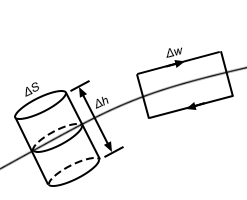The finite-difference time-domain (FDTD) method requires a minimum of ten cells per wavelength to assume a linear field transition between adjacent cells in order to consistently achieve accuracy. Maintaining this relationship for good conductors is not practical because the fields are decaying exponentially over the skin depth, which is a short distance when compared to the free space wavelength. The surface conductivity correction in XF can be enabled for good conductors to more accurately model the losses and reflections at the boundary of a metal.
Background
FDTD's discrete representation of Maxwell's equations creates a need for XF's surface connectivity correction. In order to accurately model field interactions at metal boundaries, the conductivity needs to be modified so the impedance used in FDTD matches the theoretical value.
In this case, assume a time-harmonic transverse electromagnetic wave propagating in lossy media. Further, simplify the wave to traveling in the z direction and containing only the x component of the electric field.
